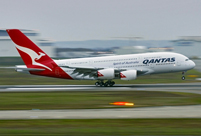 Ballerinas anywhere but onstage
Ballerinas anywhere but onstage
 Top 10 safest airlines in the world
Top 10 safest airlines in the world
 Top 10 most popular instant messaging apps in the world
Top 10 most popular instant messaging apps in the world
 Inspiring shadow images of Chinese army
Inspiring shadow images of Chinese army
 Models shine Xinjiang auto show
Models shine Xinjiang auto show
 From laid-off worker to int'l referee in bodybuilding
From laid-off worker to int'l referee in bodybuilding
 Selected photos of 'two sessions'
Selected photos of 'two sessions'
 Most unusual taxis around the world
Most unusual taxis around the world
 Bridge Worship Festival in Taijiang, SW China
Bridge Worship Festival in Taijiang, SW China
Edited and translated by Du Mingming, People's Daily Online
Malaysian Prime Minister Najib Razak said during a press conference in Kuala Lumpur, Malaysia, on 24 March 2014, that new analysis of satellite data suggested that the missing Malaysia Airlines Flight MH370 "terminated" in the southern Indian Ocean. He also said the type of analysis used to investigate the mystery of the jetliner's disappearance has never been used before. The statement sparked intense speculation on the part of international media.
Australian aviation specialists say the wreckage could be identified through barnacle tests
Australian aviation specialists say that tests should be conducted on barnacles attached to any material recovered from the debris spotted on Monday by Chinese aircraft searching for the missing plane.
Jason Middleton, head of the School of Aviation at University of New South Wales, told Xinhua that any floating debris would attract barnacles, and it was easy for marine experts to determine from them how long the debris had been in the water.
Professor Chun H. Wang from RMIT, also the Director of the Sir Lawrence Wackett Aerospace Research Centre, said that the first priority when the debris was brought to shore would be to examine what was on the surface. These tests will determine how long the debris has been in the water, and whether that fits the timeline of the plane's disappearance. "If the timeline of the barnacles corresponds with the timetable of the missing plane, then it can be considered a valuable lead, and further examination can be carried out," said Wang.
A barnacle is a cirripede, a kind of crustacean, which is found in or very close to sea water. It is covered with hard plates of calcium carbonate. Once it finds a suitable location, it secretes an adhesive from its antennae and remains permanently attached to hard surfaces.
Read the Chinese version: 为何未见残骸就确认“终结”?; Source: Beijing News
 Female journalists at 'two sessions'
Female journalists at 'two sessions' Interpreters serving 'two sessions'
Interpreters serving 'two sessions' Female SWAT team in Chongqing
Female SWAT team in Chongqing Top 10 safest airlines in the world
Top 10 safest airlines in the world Old photos of Anti-Japanese War
Old photos of Anti-Japanese War Mysterious 'Dolan Tribe' in Xinjiang
Mysterious 'Dolan Tribe' in Xinjiang A bite of Luoping County
A bite of Luoping County This is Shanghai
This is Shanghai Chinese airborne troops complete parachute training in various training bases
Chinese airborne troops complete parachute training in various training bases Ballerinas anywhere but onstage
Ballerinas anywhere but onstage Most unusual taxis around the world
Most unusual taxis around the world Micro-expression at 'two sessions'
Micro-expression at 'two sessions' Bridge Worship Festival in Taijiang, SW China
Bridge Worship Festival in Taijiang, SW China Hollywood documentary brings Diaoyu Islands truth to new audience
Hollywood documentary brings Diaoyu Islands truth to new audience Miss HK and actresses shine at flower show
Miss HK and actresses shine at flower showDay|Week|Month